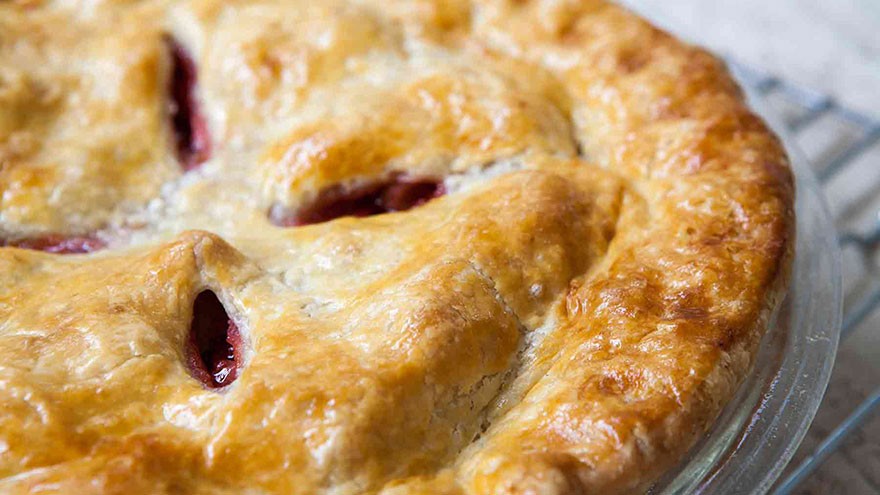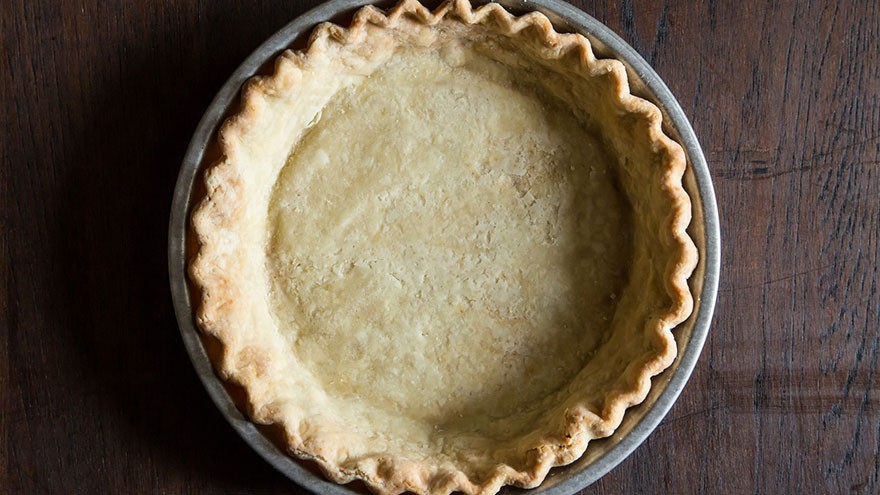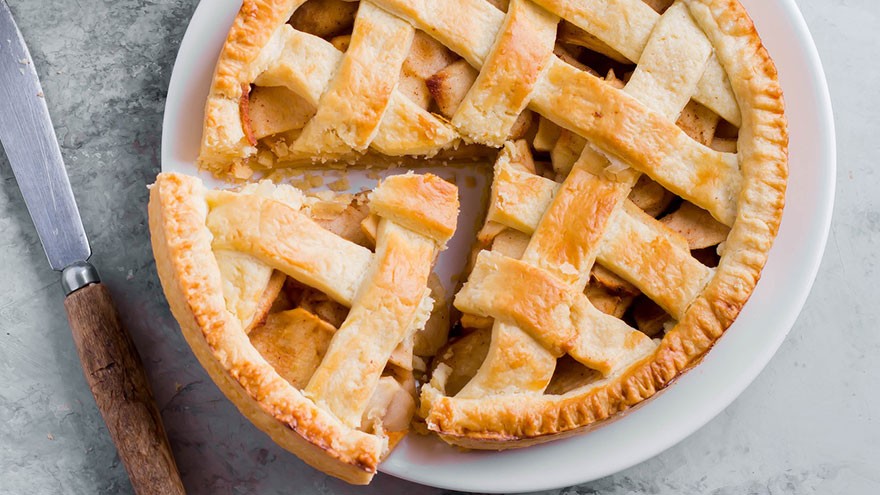Make the Perfect Pie Crust – Part II
I typed about choosing the best ingredients for homemade pie crust and offered some tips on mixing those ingredients together so you end up with a flaky crust.
Now, learn how to roll out the dough and keep it relaxed and flaky.
Rolling it Out
Place the dough (still in plastic wrap) on the counter for about 15 minutes, or until it softens. Lightly flour the countertop.
There should be enough flour on the counter that you can still see some of the countertop, but not so little flour there are gaping areas where you can see the countertop.

Remove the dough from the plastic wrap and place in the center of the floured surface. Sprinkle a tiny amount of flour over the top of the dough. Using a rolling pin, and an even amount of pressure, roll from the middle of the dough outward.
Never roll in any other direction but middle to edge. Many cooks like to rotate the dough one quarter turn and repeat, over and over.
At the first sign of the dough sticking to the rolling pin, remove the pin and sprinkle the dough with a small amount of flour.
If a split forms in the dough, use your hands to push it back together.

Don’t try to make the dough into a perfect circle. It just needs to be large enough to fit into the pie plate.
9 inches is standard for a pie plate; if your plate is bigger, make sure your recipe makes up enough dough to accommodate the plate – otherwise you’ll have too little pastry to get the job done.
Use a ruler to check the size of the dough, or hold the pie plate upside down just over the pastry.
Into the Plate
Once the dough is relatively the same thickness and large enough to fit the pie plate, My favorite method for moving the dough into the plate is to fold the dough in half, lift it, and put it on one side of the pie plate (which I’ve moved right next to where the rolled out pastry is).
Then I simply unfold the dough. Another method is to roll the dough up onto the rolling pin, then unroll it gently into the pie plate.
If the dough splits, just push it together with your fingers.

With your fingers, gently push the pastry into the shape of the pie plate. Turn under the edges. (If the edges are much too large for the pie, you may trim them with scissors first.) The edges then need sealing. The easiest way to do this is with a fork. Simply press down with the fork tongs.
If you have time, gently cover the pie plate with plastic wrap and refrigerate for one hour before baking or filling. Again, this will result in a flakier crust.
If the pie crust needs to bake before adding filling, prick the bottom and sides with a fork first.
Pies and Tarts to Try
- Apple Fine Pie, a French take on the American favorite.
- Chard Tart, a unique dish.
Check out the video version of this article on YouTube

